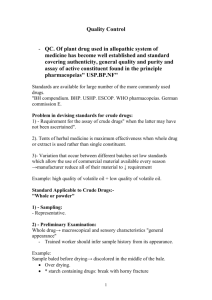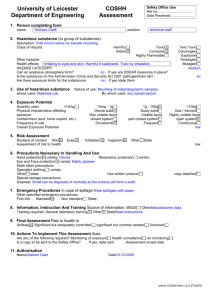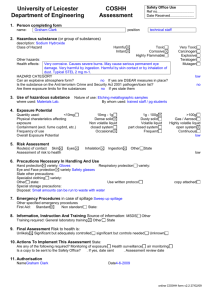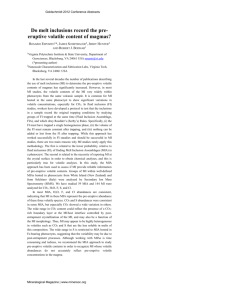The volatile element record of Earth`s accretion
advertisement
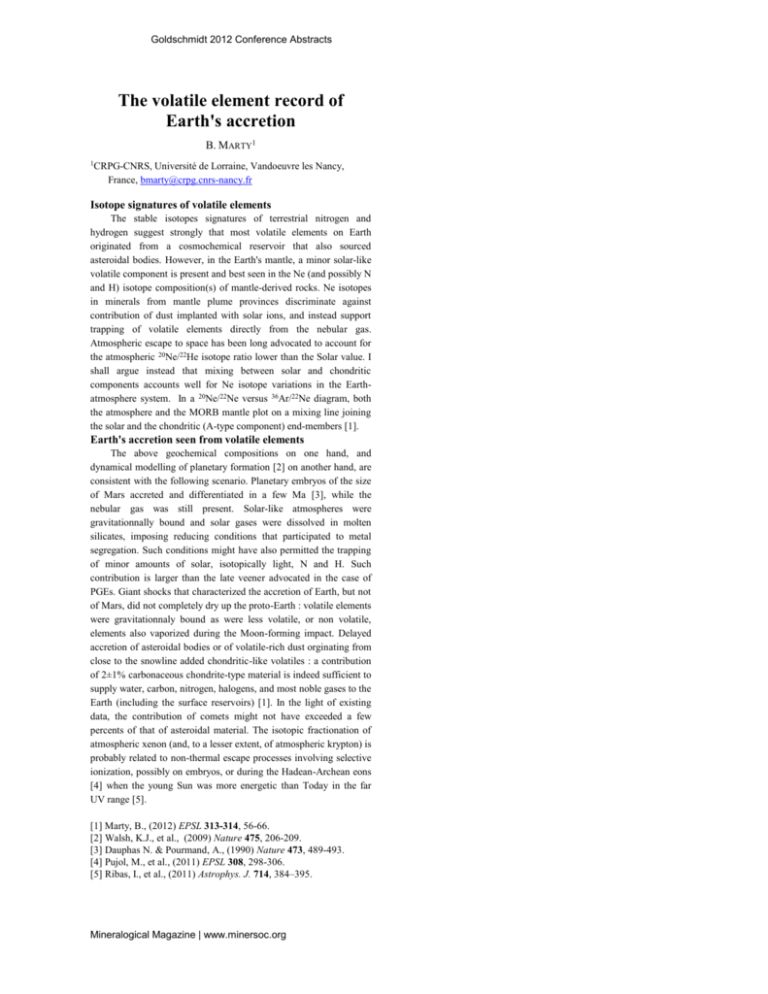
Goldschmidt 2012 Conference Abstracts The volatile element record of Earth's accretion B. MARTY1 1CRPG-CNRS, Université de Lorraine, Vandoeuvre les Nancy, France, bmarty@crpg.cnrs-nancy.fr Isotope signatures of volatile elements The stable isotopes signatures of terrestrial nitrogen and hydrogen suggest strongly that most volatile elements on Earth originated from a cosmochemical reservoir that also sourced asteroidal bodies. However, in the Earth's mantle, a minor solar-like volatile component is present and best seen in the Ne (and possibly N and H) isotope composition(s) of mantle-derived rocks. Ne isotopes in minerals from mantle plume provinces discriminate against contribution of dust implanted with solar ions, and instead support trapping of volatile elements directly from the nebular gas. Atmospheric escape to space has been long advocated to account for the atmospheric 20Ne/22He isotope ratio lower than the Solar value. I shall argue instead that mixing between solar and chondritic components accounts well for Ne isotope variations in the Earthatmosphere system. In a 20Ne/22Ne versus 36Ar/22Ne diagram, both the atmosphere and the MORB mantle plot on a mixing line joining the solar and the chondritic (A-type component) end-members [1]. Earth's accretion seen from volatile elements The above geochemical compositions on one hand, and dynamical modelling of planetary formation [2] on another hand, are consistent with the following scenario. Planetary embryos of the size of Mars accreted and differentiated in a few Ma [3], while the nebular gas was still present. Solar-like atmospheres were gravitationnally bound and solar gases were dissolved in molten silicates, imposing reducing conditions that participated to metal segregation. Such conditions might have also permitted the trapping of minor amounts of solar, isotopically light, N and H. Such contribution is larger than the late veener advocated in the case of PGEs. Giant shocks that characterized the accretion of Earth, but not of Mars, did not completely dry up the proto-Earth : volatile elements were gravitationnaly bound as were less volatile, or non volatile, elements also vaporized during the Moon-forming impact. Delayed accretion of asteroidal bodies or of volatile-rich dust orginating from close to the snowline added chondritic-like volatiles : a contribution of 2±1% carbonaceous chondrite-type material is indeed sufficient to supply water, carbon, nitrogen, halogens, and most noble gases to the Earth (including the surface reservoirs) [1]. In the light of existing data, the contribution of comets might not have exceeded a few percents of that of asteroidal material. The isotopic fractionation of atmospheric xenon (and, to a lesser extent, of atmospheric krypton) is probably related to non-thermal escape processes involving selective ionization, possibly on embryos, or during the Hadean-Archean eons [4] when the young Sun was more energetic than Today in the far UV range [5]. [1] Marty, B., (2012) EPSL 313-314, 56-66. [2] Walsh, K.J., et al., (2009) Nature 475, 206-209. [3] Dauphas N. & Pourmand, A., (1990) Nature 473, 489-493. [4] Pujol, M., et al., (2011) EPSL 308, 298-306. [5] Ribas, I., et al., (2011) Astrophys. J. 714, 384–395. Mineralogical Magazine | www.minersoc.org




